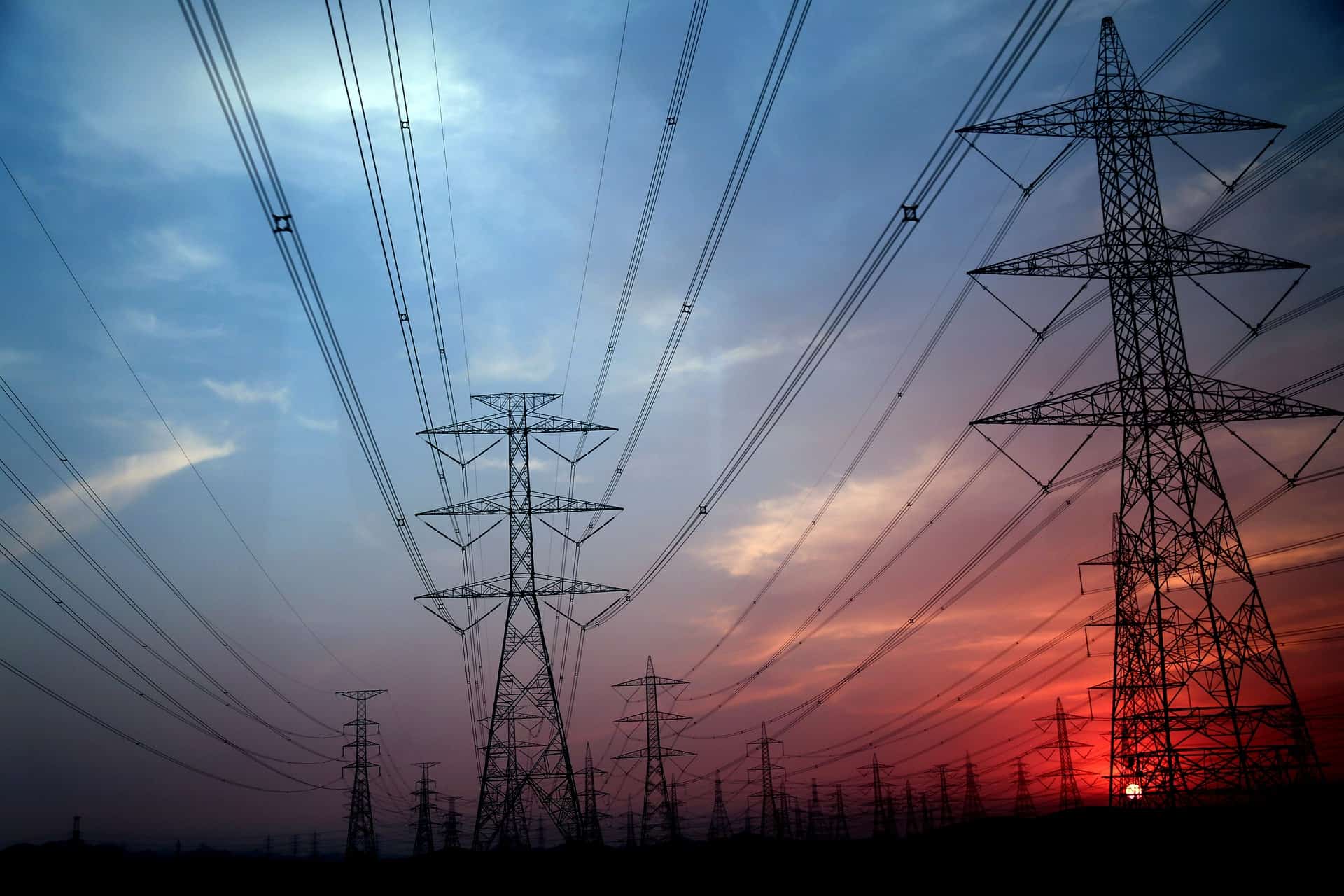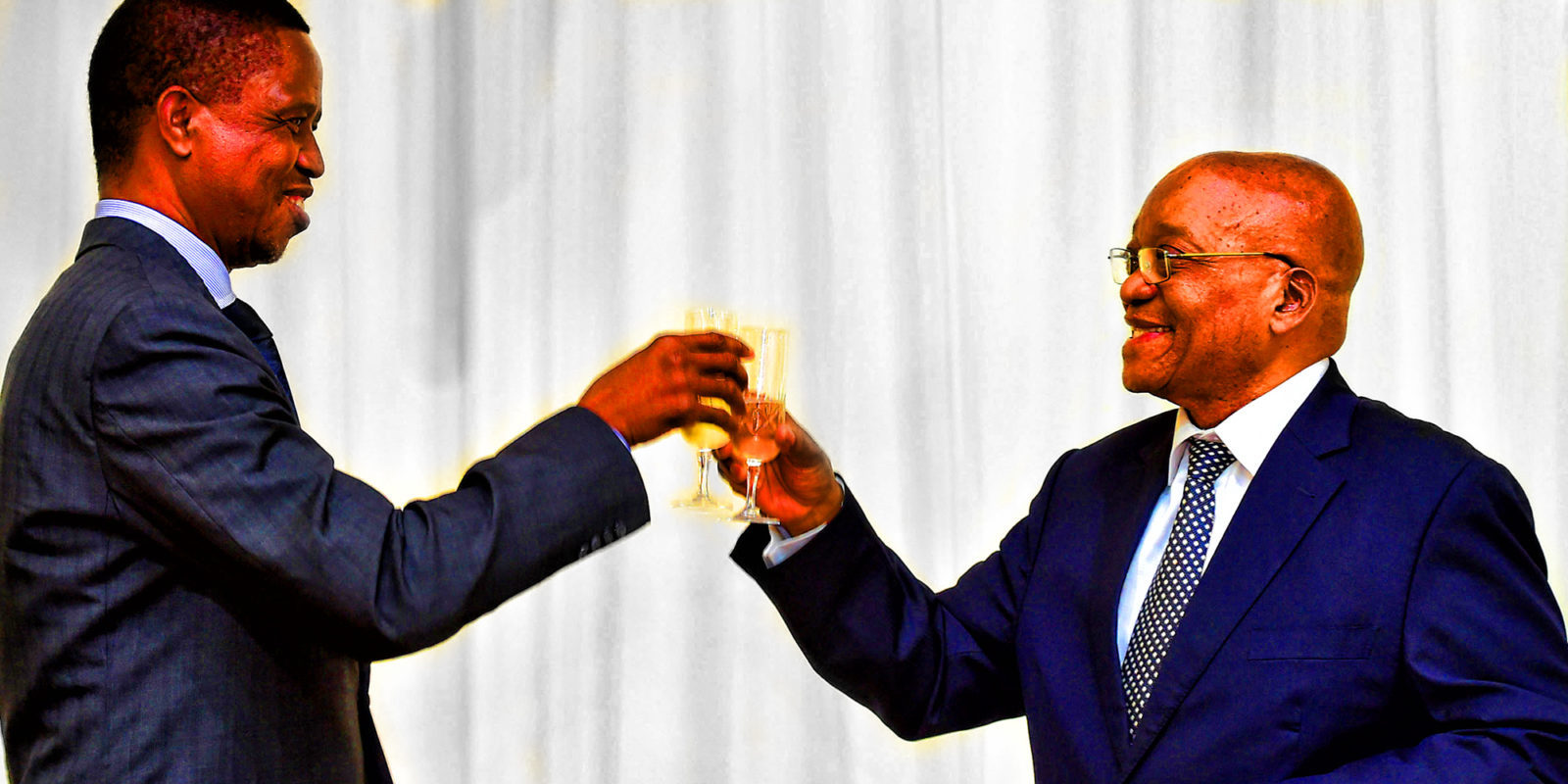News
Eskom - Too big to fail, or too big to save?
The rules of arithmetic are different from the rules of politics.

Former Director, The Brenthurst Foundation

Former Research Director, The Brenthurst Foundation

Eskom has no choice but to cut its costs or the debt will keep mounting. The most obvious target is the hyper-inflated wage bill from years of patronage during the Zuma years. The utility has a jaw-dropping 600-strong layer of managers, but whatever it is that they are overseeing, they are not doing a great job.
Eskom is, according to President Cyril Ramaphosa, “just too important to fail”. He told a conference organised by Goldman Sachs after his recent election victory:
“It holds the fortunes, at an economic level and the social life of our country, in its hands.”
He is not wrong. Eskom holds the key to South Africa’s future firmly in its coal-dusted hands. It must provide enough reasonably priced electricity to power up the economy which must grow at 5% or more if there is to be any hope of containing debt and absorbing the swelling ranks of the unemployed.
And it’s not only South Africa that depends on Eskom’s success. Eskom exports energy to seven countries in southern Africa — Zimbabwe, Lesotho, eSwatini, Namibia, Botswana, Mozambique and Zambia, according to Africa Check. As with all things Eskom, it’s complicated, as energy is also imported from Mozambique’s Cahora Bassa hydro-electric facility.
Zimbabwe alone relies on South Africa for around 50MW a day to supplement supplies from its creaking grid and water-dependent generation at Kariba.
At present Eskom’s lack of generation capacity places a glass ceiling on growth at around 2% without leading to “load shedding”. Further industrial activity — itself not guaranteed unless government manages to untie the regulation that is suffocating the economy — will require the stabilisation of the existing generation capacity and the speedy commissioning of new supply from the massive Khusile and Medupi power stations, both of which are experiencing problems due to sub-par construction. According to the Department of Public Enterprises, the two power stations had achieved only 40% reliability, contributing to load-shedding that hit South Africa in early 2019.
But can Ramaphosa fix Eskom? The sheer scale of the problem makes it easily the government’s biggest financial challenge since the dawn of democracy. And then there are the political fetters, some self-imposed, which appear to limit Ramaphosa’s options.
First the scale of the problem. Eskom’s debt is anything from just less than R500-billion to R750-billion, if the contingent liability for power-purchasing agreements from the multitude of renewable microgenerators and others are taken into account.
The reasons that Eskom has incurred such massive debt are not hard to find. Over the past decade, it was looted by a succession of Zuma-appointed State Capture cronies who broke down its auditing and financial management capacity in an attempt to legitimise a raft of supply contracts which accrued to businesses run by the Guptas and others.
But it was not just the Guptas that benefited. The destruction of Eskom’s technical management capacity and the decimation of its once-vaunted engineering department took place as it concluded massive procurement contracts to build the world’s third- and fourth-largest coal-fired power stations which were supposed to secure supply to the grid by coming online in 2012 and 2015 respectively.
Together they would have supplied South Africa an extra 9,600MW of power. In 2019 both were still under construction and the units which had come online were suffering from massive technical failures due to poor supervision of the contracts.
When their construction was announced by Eskom in 2007, Medupi was costed at just less than R70-billion and Kusile at R80-billion. At the beginning of 2019, the costs were “conservatively” estimated to have grown as high as R208.7-billion for Medupi and R239.4-billion for Kusile, according to energy expert Chris Yelland.
The contracts to construct these two giant “six-packs” — so named because each comprised six generation units — were problematic, bearing testimony to the poor state of Eskom’s engineering project management corps.
For one, Eskom allowed components of the power stations to be independently contracted rather than opting for a turnkey solution. Second, they were initiated at a time when the country was facing an energy shortage due to high rates of growth, when a better solution may have been multiple turnkey 1,000 MW projects put out to international tender. Third, the small number of renewable schemes is complex to manage and costly to administer. Anyway, for a country with abundant coal stocks, going the small-scale renewable route is not the only solution.
The state of Eskom’s management has been helped by the appointment of no fewer than 10 CEOs since 2007. Jacob Maroga (2007-2009), Mpho Makwana (2009-2010), Brian Dames (2010-2013), Colin Matjila (2013-2014), Tshediso Matona (2014-2015), Brian Molefe (2015-2016), Matshela Koko (2016-2017), Johnny Dladla (2017) and Sean Maritz (2017-2018) all came and went during the Zuma years.
Finally, Phakamani Hadebe (2018-2019), appointed by the new “clean”, Ramaphosa-era board threw in the towel last week. Hadebe’s frustration is unsurprising. He proposed a wage freeze as a first step to cutting Eskom’s costs. Alarmed at the political implications, Ramaphosa’s government overruled him and a 7.5% increase was agreed on in August 2018. It was clear that he had lost his executive authority and drifted on as an empty vessel for the rest of his tenure.
During 10 years of looting, Eskom made its bed. Now it must lie in it. Earlier in 2019, Eskom chairman Jabu Mabuza outlined the Catch-22 that the utility now found itself in. The Mail & Guardian quoted him as saying:
“We have done the exercise and have concluded that the costs of not continuing (with Medupi and Khusile) is not going to be met by the benefit of continuing.”
Mabuza said Eskom would have to spend a further R18-billion on each of the stumbling behemoths to complete them. He did not say how much would have to be spent on repairing the units that have begun to fail.
Meanwhile, Eskom’s debt is rapidly expanding, and its debt profile is deteriorating as it retires debt obtained under more favourable conditions a decade ago, and continues to service the expensive debt it accrued as its rating went through seven negative gear-changes during the Zuma years.
This is exacerbated by the need to more-or-less run its two 1,000 MW diesel turbine stations — originally intended for emergencies only — at full speed to supplement supply as its coal plants stumble through cycles of maintenance and failure.
According to Mabuza, Eskom must reduce its debt by R250-billion if it is to have sufficient cash to cover debt-servicing costs.
“We have an ability to service R250-billion less (in debt) than what we have.”
So, reducing Eskom’s debt is its priority — and the priority of Ramaphosa’s new government. But it appears that government has bound itself in political fetters which have seriously limited its options when it comes to solving the problem.
Eskom has no choice but to cut its costs or the debt will keep mounting. It has two immediate options: Cut its consumption expenditure — essentially its wage bill — or cut its capital expenditure — the money spent on building and maintaining generation and transmission capacity.
The most obvious target is the hyper-inflated wage bill which resulted from years of patronage dispensed during the Zuma years. According to a Business Day report, the utility has a jaw-dropping 600-strong layer of managers known as the “E-band” which flourished while the utility was captured. Whatever it is that these managers are overseeing, they are not doing a great job. The myriad failing construction and maintenance contracts attest to that.
The wage-bill numbers are staggering. In June 2018, the economist Mike Schüssler estimated that the average remuneration per employee at Eskom was no less than R798,000 a year. Nedbank CEO Mike Brown quoted a similar figure. Tech Central quoted Schüssler saying that even if the income of executives and senior managers was excluded, the average would be R600,000 a year.
These figures were subsequently disputed by the unions, but Schüssler said they are arrived at by dividing the total salary bill by the number of employees according to numbers published in Eskom’s annual report.
“There’s less electricity produced than a decade ago. There’s a third more staff than a decade ago,” he said in an interview on 702.
In December 2003, Eskom had 31,972 employees. By March 2017 this had increased to 47,658 employees, according to numbers published in its annual reports.
In 2016, a World Bank study found that Eskom was 66% overstaffed. It had the largest workforce when compared to 39 other countries and it only needed 14,244 employees if it followed the typical developing country standard of one employer per 413 electricity customers.
Ramaphosa has acknowledged that there is a serious problem. Addressing the Goldman Sachs conference, he said:
“Key structures at Eskom were completely destroyed. It started at the top, the governance was a major problem and then there was the ballooning of staff… for the power we generate, we are overstaffed.”
But, curiously, he has committed the government to not reducing staff numbers.

“We will deal with it sensitively with our unions with thorough discussions without throwing people out. It’s a problem we have to deal with, but in the end, Eskom is too big to fail.”
The mystery of exactly how the “ballooning” and “overstaffed” utility will be right-sized “without throwing people out” is yet to be solved. This after Eskom had itself announced that it was “targeting a reduction in the Eskom company workforce to 36,746” by the 2021/22 financial year.
It neatly illustrates Ramaphosa’s Achilles heel — he depends on the unions and the left within the ANC for political support in his ongoing fight to stay ahead of the rebelling Zuma faction. If he fixes Eskom’s wage bill, he might find himself more politically isolated.
The only other possible solution would be to sell off some of the generation or transmission assets to the private sector, but that raises the dreaded “p-word” — privatisation.
Ever since Mbeki was swept from power by an SACP and the union-led alliance because of his “neo-liberal” economic agenda, ANC leaders have been falling over themselves to demonstrate their left credentials lest they suffer a similar fate.
This ideological posturing ties the government’s hands when it comes to providing a solution to Eskom’s problems. Ramaphosa has announced that Eskom will be broken up into three entities managing generation, transmission and distribution. At the time of the announcement, he said:
“We need to take bold decisions and decisive action. The consequences may be painful, but they will be even more devastating if we delay.” The announcement was strongly criticised by the unions as the precursor to privatisation and job losses, which is surely what Ramaphosa was referring to when he described “bold and decisive action” with “painful” consequences.
Instead of standing by his plan, he quickly back-pedalled on cutting jobs and made it clear that there would be no privatisation. As he recently said:
“We are not privatising Eskom, we are restructuring it so we can allow the private sector to be our partners.”
Exactly how the private sector will be persuaded to become “partners” in a massively indebted, patently mismanaged and highly risky business without having an equity stake or management control of some kind has yet be spelt out.
Perhaps the recently announced decision to allow the private sector to generate its own power and sell the surplus to the grid according to a yet-to-be-announced formula is the government’s way of getting the private sector involved. While a welcome indication that the grid will open itself to private generation on a small scale, this is hardly the most efficient or cost-effective way to produce power.
Without mobilising private sector capital or cutting its staff expenditure, Eskom will have no choice but to reduce capital expenditure or to radically increase tariffs to a level where it has sufficient income to reduce debt. The latter solution has hit a brick wall at the National Energy Regulator, which has capped its tariffs at a rate far lower than would be needed to accomplish this.
Cutting capital expenditure (which would somehow have to be achieved without shedding jobs at the mothballed power stations or generating units) would mean less base-load capacity from coal-fired power stations and a reduction in spending on maintenance, which is already way behind where it ought to be.
Reduced generation by coal-fired power stations could, to some extent, be compensated for by plugging more renewable power sources into the grid. But, as these are dependent on the sun and the wind, they cannot provide the base-load which brings power to the grid day and night, regardless of conditions.
While the government debates what to do, Eskom’s debt is burning a hole bigger than is fiscally manageable in the national balance sheet.
Whatever the political niceties, if Eskom’s debt is as big as is thought, there seems to be no other way to fix it than to deal with its off-the-charts wage bill and sell off its assets to one or more private equity partners.
A bitter pill to swallow, undoubtedly one that would provoke the trade unions. But the rules of arithmetic are different from the rules of politics.
This article was originally published on The Daily Maverick.

